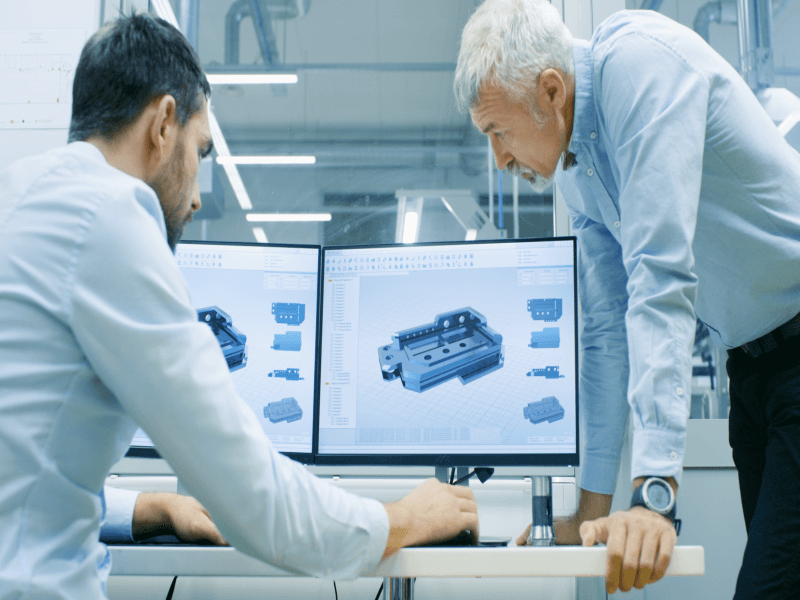Mechatronics, IoT and Digital twin: The new world of Mechanical Design

The world of Mechanical Design is in a state of transition. Mechanical design tools and techniques are always changing and with software providers continuously upgrading their products and developing new ones, mechanical design jobs continue to evolve.
At Redline Group, we help thousands of technology companies identify, attract and secure professional and qualified mechanical engineers. Most have experience in developing multiple product concepts, or improving existing products; developing solid models and layouts, selecting appropriate materials, performing engineering Finite Element Analysis (FEA) and generating production drawings through to NPI.
We spoke to Natalie Tyler, Redline’s Associate Director who specialises in sourcing candidates for mechanical design engineer jobs in various roles such as CATIA V4, V5 and V6, SolidWorks jobs, SolidEdge, AutoCAD, ProEngineer, Unigraphics, Inventor and Ideas.
“Let’s start with a shift that is a much larger engineering trend: automation.” says Natalie. “From autonomous vehicles to automated agriculture, automation is on the rise, for better or worse. The world of CAD is no exception. Automation of design is a fundamental trend affecting how mechanical engineers and designers work. This is all driven by technological advances like the Internet of Things (IoT), new paradigms like cloud computing and even the changing nature of engineering itself,” says Natalie.
There are three levels of automation affecting product design:
- Assistive automation
- Augmentative automation
- Autonomous automation
Natalie continues: “Assistive automation is used to reduce the friction created by seemingly trivial tasks which are repetitive in nature, which still require a lot of time. For instance - creating assemblies—today we still have to indicate all the details of how components are connected, and we have likely done similar things with similar components many times over. Today, predictive assembly is refined in Solidworks R&D labs, and very soon it will come to the designer’s desks.”
The next level is augmentative automation which uses multi-physics simulations to help engineers make better decisions. This is where simulation is continuously a part of the design process. Simulation technology can not only optimise existing designs (e.g. topology optimisation), but also automatically recommend optimal shapes altogether. In this scenario, the designer has to focus mainly on the formulation of the problem, in terms of constraints, forces and boundaries, and then the system will automatically provide the best shape options for the task in hand.
The third level of automation is autonomous which removes humans from the equation entirely. This is, in a way, the highest form of automation, where things happen without any human intervention. For instance, this could involve the programming of a coordinate measuring machine to quality-test a manufactured product or the generation of the cutting path for a milling machine. Feature recognition and smart algorithms will make the programming of those machines very easy, if not fully automated. The consequence, in case of manufacturing, is that every designer will be able, in real time, to understand the consequences, and the cost, of a design strategy and experiment accordingly.
Another trend shaping the future of mechanical engineer jobs is the IoT and, with it, a convergence of the previously distinct worlds of electrical and mechanical design that’s been labelled mechatronics.
“The distinction between mechanical and electronic design today is fading,” says Natalie. “Objects are mechatronic in nature and the design needs to be simultaneous. For example robots: their sensors are everywhere, so they require circuit boards and their geometry, location and airflow for cooling are essential to the function. In addition, the design must account for the tolerances and the flexible nature of all mechanical components used for the robot to predict very precisely and often at high speed.”
“This means engineers need an integrated approach to mechatronics design. Product designers in 2018 will be increasingly sensitive to how well their tools enable seamless electrical and mechanical coordination—not just because their designs will demand it, but because the designers themselves will. Design engineers will need to be more versatile. Specialisation in an era of integrated design systems is less necessary. Modern integrated design systems will make versatility possible by reducing the knowledge gap among various disciplines.”
The Internet of Things (IoT) also means that product designers can remain connected to their products and thus find new ways to improve their designs. The IoT has helped accelerate innovation in the design process, making it possible for manufacturers to receive information from products in the field that can be leveraged to improve new or future iterations of products. Even as engineers create more connected products, they themselves will find ways to benefit from those connections. Their CAD tools must therefore allow them to make the most out of the IoT.
Another popular approach to changes is in the form of a digital twin, an entangled pair consisting of a physical product and its digital counterpart. With a digital twin, the digital definition is combined with the specific physical experience of the asset—for example, environmental conditions and performance data from an operating asset. This purpose-built digital representation allows manufacturers to analyse assets for future sales, recalls or update opportunities. Real-world usage can be leveraged to improve future products or future iterations of the products.”
Please contact us about the latest CATIA job opportunities if you have experience and knowledge in 2D or 3D CAD or specifically CATIA V4, V5 and/or V6.
For further information on Mechanical Design jobs click here or for more Engineering Recruitment and R&D jobs in high technology and electronics environments, please contact Natalie Tyler on 01582 878808 or send an email to NTyler@redlinegroup.com

